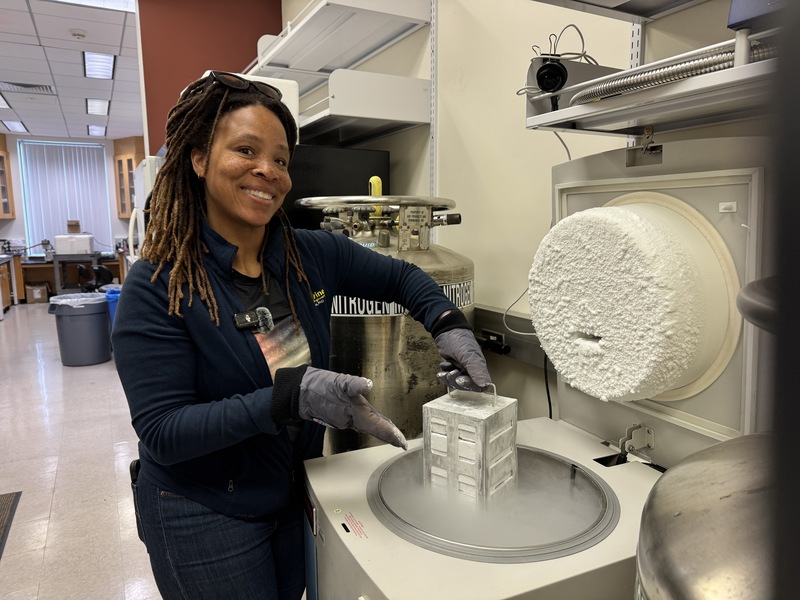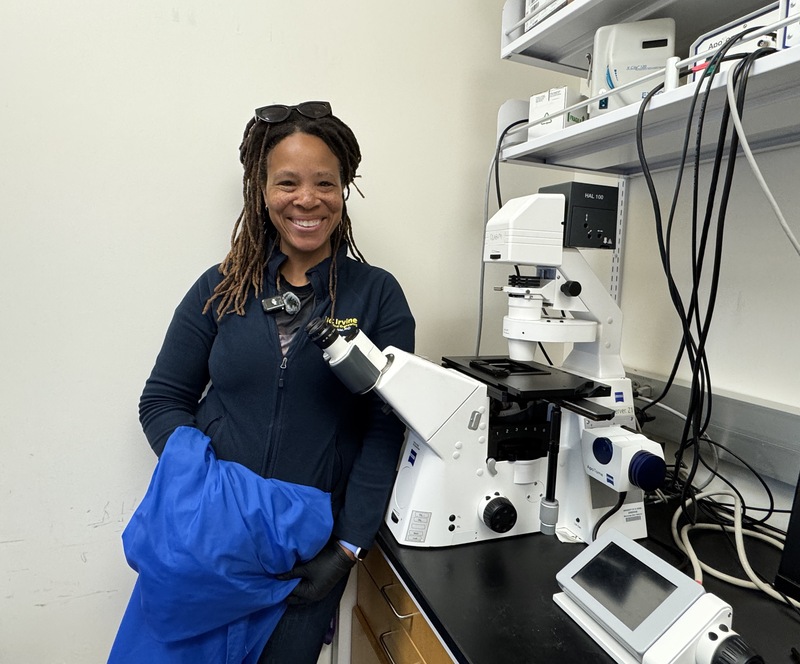100 Year Starship Project Fuels Wound Healing Without Scar

The Lab Beat
Oct. 15, 2025 - Ronke Olabisi has wanted to travel to outer space since she was four years old. “I want to be weightless. I've gone in a parabolic flight, but I want the whole package,” she said. “I can't explain what that four-year-old was thinking, but she put this burning desire in me that I've never grown out of.”
Olabisi is now a UC Irvine associate professor of biomedical engineering who specializes in engineering human tissues so people can enjoy better health in space and on Earth. She’s a part of the 100 Year Starship Project, which was launched by the U.S. Department of Defense in 2011 and is now led by former astronaut Mae Jemison. The project aims to find ways for humans to be able to travel beyond our solar system.
“The 100 Year Starship Project is a thought experiment,” Olabisi said. “It doesn’t matter if we get there, if we try, what are the innovations that will come from the effort?” She likens it to when humans decided to reach for the moon in 1961. They landed there in 1969, but even more importantly, that dream fueled an explosion of technology that includes aspects of modern life such as communications satellites, sunglasses, athletic shoes, freeze-dried food, water filters and much more.
For the Olabisi Lab, that interstellar dream means finding ways to enable people to overcome health challenges in space flight. Due to the absence of gravity, astronauts face loss of bone density, and impairment of vision and wound healing in space. Olabisi is making strides in tissue engineering in skin, bone muscle and retina. Tissue engineering uses cells, scaffolds, and biofactors to instruct the cells what to build within the scaffold. “I use encapsulated cells as the instructions for your own body to do the work,” she said. “I use cues from nature that I embed into hydrogels and give really powerful instructions.”
In experiments on mice, she has enabled diabetic wounds to heal in just 14 days without scar, a marked improvement from the usual 40 days with scar. Her lab used two powerful wound healing agents — adult stem cells and insulinoma cells — and put them on a hydrogel and put that on wounds. The adult stem cells detect fluid that leaks from the wound and give it the exact growth factors the wounds need to heal.
“We believe that when we put the cells together, we primed these cells towards a wound healing to be like the difference between Clark Kent’s best friend and Superman. Both his best friend and Superman know what to do to save the day, but only Superman can do it. These cells know what to do, but it isn’t until we prime them do they become “Superman,” she said. Now that they’ve succeeded with mice, she wants to work with a veterinary clinic to heal burn wounds in animals and then take that data to try clinical trials in people.
Lack of gravity can cause astronauts to lose one to three percent of their bone density a month in outer space. Olabisi has been able to foster bone growth by using nacre, or mother-of-pearl, which is 3000 times stronger than its material aragonite when it’s made by seashells. Nacre is an ideal implant material because it’s extremely strong and acellular, so it won’t be rejected by the human body.

“What we're doing with bone is we're using seashell to try to micropattern bone so that it doesn't go where we don't want it to go when we use methods to cause bone growth,” Olabisi said. Her lab uses the proteins in nacre to direct osteoblasts, which are bone growing cells, to grow solely in patterns they determine. She has seen success with in vitro tests in petri dishes. Her research could ultimately help people with osteoporosis, such as women in midlife and the elderly.
Her lab is also investigating age-related macular degeneration, which is the leading cause of blindness in the developed world. There are wet and dry forms of this disease, and the dry form has no effective treatment. It happens when the membrane that supports the cells, the Bruch's membrane, starts to function poorly. One can think of it like a bed that they sit on. A lot of groups are trying to develop different replacement beds. It's like they're trying to see if an air bed, a waterbed, or a spring mattress is preferable.
“We are trying to use one bed and ask, okay, if you have this one bed do the cells like it stiff or soft? Do they like this blanket or that blanket (if the blankets are molecules),” Olabisi said. “So we’re trying to rebuild these membranes one attribute at a time. And ironically, the back of the eye is affected in Spaceflight-Associated Neuro-Ocular Syndrome. It’s not the same as age-related macular degeneration, but it’s always my hope that a discovery that helps one problem will help another.”
“All of the things that are relevant for being in a spaceship are relevant on Earth,” Olabisi said. While we may see her in outer space someday, Olabisi is already making great steps forward in tissue engineering that will benefit people on this planet and beyond.
- Natalie Tso
(Listen to a 5-minute podcast featuring Ronke Olabisi and her UCI lab on The Lab Beat.)
